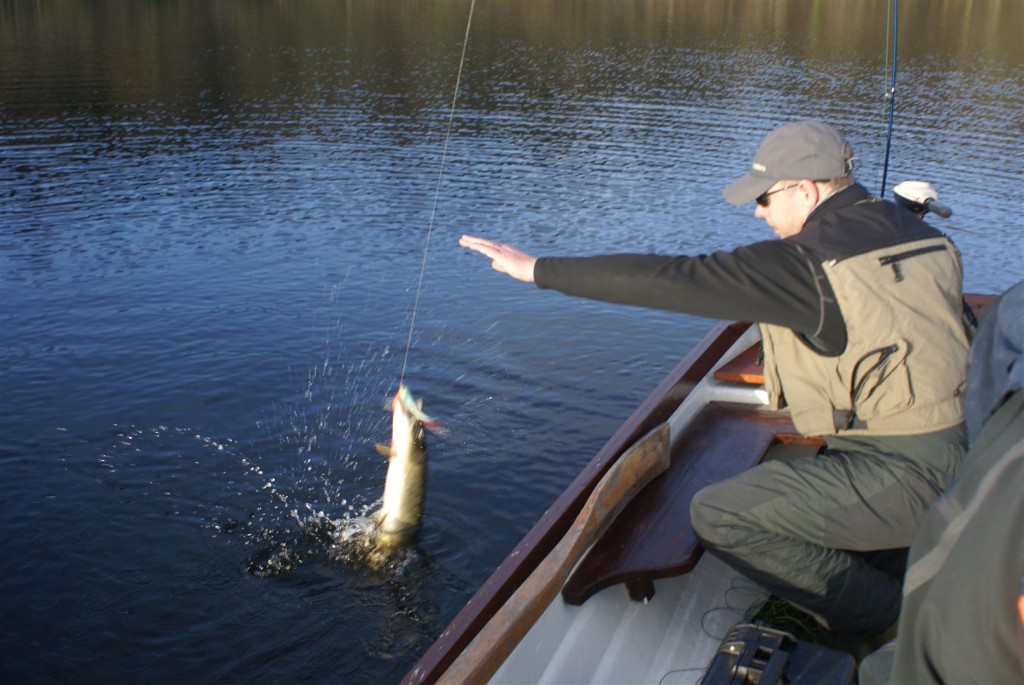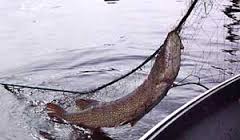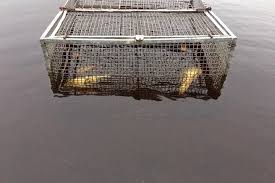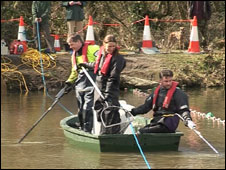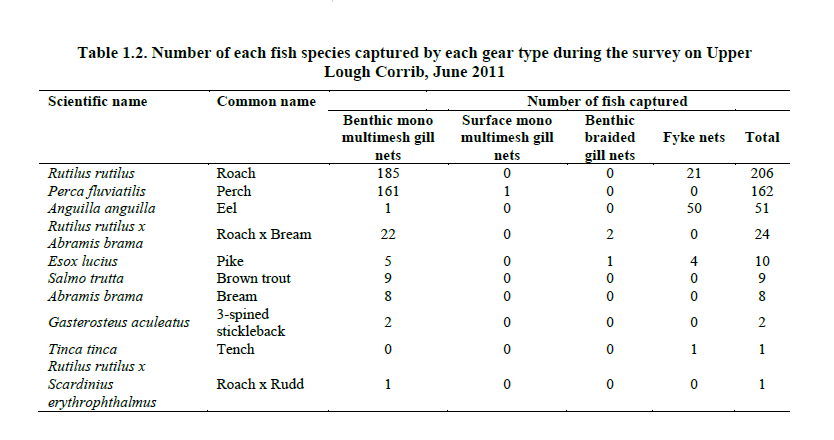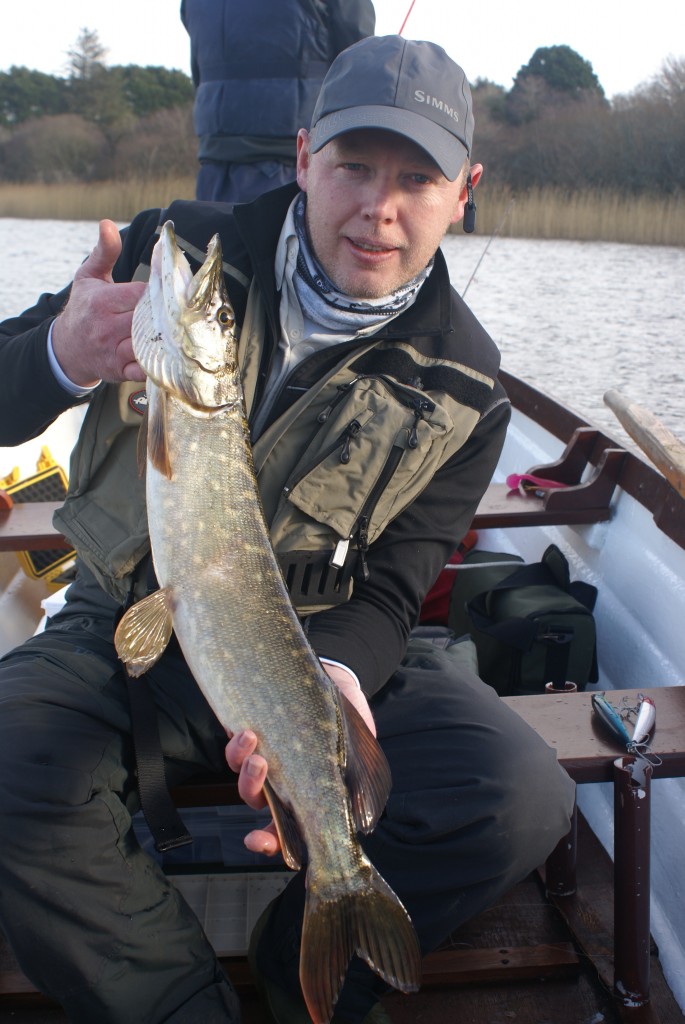Victimised or misunderstood - not the pike but IFI! Mark Houlihan has something to get off his chest in relation to Pike and Fishery Management...
History – Management or Interference?
The Inland fisheries Trust was set up in 1951 to develop our waterways, protect and enhance our native fish stocks and promote the product of Irish angling at home and abroad. Over 60 years later Inland Fisheries Ireland in association with Failte Ireland continue to develop, protect and promote the Irish angling product. Ireland is not unique in offering top class fishing as there are many other European countries that compete for travelling anglers and have now got better at protecting and promoting their own angling product. In fact many international coarse anglers don’t consider Ireland as a viable destination because coarse fish in Ireland are afforded little in the way of protection by our state agencies and on many waters a policy of eradication had been modus operandi for decades. No other species has suffered most from this policy as Pike.
In the middle of the last century there was a marked decline in trout numbers on some of the famous trout waters in the west of Ireland, such as Lough Corrib and Mask. At the time pike were seen as non native and became a prime suspect in the demise of trout stocks and eventually started over 50 years of persecution which included netting and poisoning . It has been Irelands longest running fisheries experiment and one of the biggest ecological gambles ever undertaken. Removing an apex predator from its natural environment for the perceived betterment of game species has now been accepted by many to be a costly mistake. In retrospect the decline of game species has been attributed to a number of factors and certainly not the “pike introduction” theory proposed by the then Inland Fisheries Trust. So if it wasn’t pike, what factors led to the decline in trout numbers? At the time, more anglers fished and killed what they caught. More houses were built, towns developed dumping sewerage into tributaries and lakes. Arterial drainage schemes destroyed essential spawning streams leading to a decline in trout recruitment. Pesticides, fertilizers and sewerage from piggeries have all been responsible for the decline in water quality not just on some of our most famous trout waters. Ephemeroptera fly species such as May fly which trout feed on are much more susceptible to changes in water quality and in many waters they have vastly decreased in numbers being replaced by other fly species such as chronomids which survive and flourish in enriched waters. Char are now thought to be extinct on Corrib since the 80’s, again due to decreased water quality. In recent years, the cryptosporidium infections of Galway’s water supply from the Corrib system publicly and categorically confirms the sad ecological state of Irelands best game fishery.
Invasive flora and fauna such as lagarosiphon and zebra mussels are just another chapter as Corrib seems to lurch from one catastrophe to the next.
Interfering with the natural predator/prey balance should not be entered into lightly and certainly not without sound scientific advice as to the likely ramifications. Selectively attempting to manage and engineer wild fisheries through netting and poisoning practices over a sustained period have left our once great mixed fisheries in a state of disrepair. Gillnetting reports by The Inland Fisheries Trust from 1958 -1979 show that sustained netting actually doubled the amount of pike netted over that period, while the overall weight remained the same.
The amount of trout found in the gillnets decreased from over 3000 in the first year to just over 500 in the last year. One possible result is less large pike to predate on small pike and more small pike to predate on trout. Up to 20 years ago, all pike caught in gillnets were destroyed. Sold to the pet food industry, buried and even reports of larger specimens sold to taxidermists to be mounted in glass cases. All healthy, viable, native Irish pike exterminated for the perceived betterment of game angling. Presently in the west of Ireland, all pike that are caught in gillnets over 90cm (that survive) are returned to the water. The rest are relocated to a number of chosen waters with the exception of Lough Corrib Pike. Here pike below 90cm are exterminated because of bio security risks associated with the spread of Lagarosiphon and zebra mussels from the Corrib system. Many believe it is cheaper and easier to retain these fish than relocate them to other waters. Lagarosiphon helps create spawning substrate for pike and the removal by mechanical means of the plant during the spring and early summer may have an impact on future pike recruitment.
Its possible for anglers to move boats, engines and equipment from Corrib to other systems so why not pike? I have fished a number of these relocation waters over the years and my first experience was on Carrowmore in 2007 shooting an article with Irish Angler magazine. Upon arrival we viewed a number of dead pike with damage from gillnets which were recently relocated from Lough Cullen or Conn. Let’s not forget that gillnets are designed to kill fish and are currently used means of surveying fish stocks. Each species caught in gillnets have varying mortality rates in relation to soak times and death percentages for pike can be anything from 50-75% depending on the length of time nets are deployed. Gillnets kill indiscriminately and many other species such as birds and especially trout have been killed during the Pike management program.
And who foots the bill for this barbaric pike mismanagement policy? You, me and every other tax payer on the island of Ireland plus funding from Europe. At a time when resources are stretched and fisheries staff reduced, surely this money could be better spent on the promotion and protection of pike in Ireland?
Where are we going?
My intention for this article is not to be divisive. I am a game angler who has fished for many years in the west of Ireland for trout and pike. I believe we need balanced fisheries with balanced management policies and proper representation on the board of fisheries where game, sea and coarse anglers have an equal voice. We only have to look at the results of fish stock surveys undertaken by IFI under the water framework directive and see how non-native roach and other introduced species are out competing our native trout for space and food and making up the majority of the biomass on many pike managed waters such as lough Sheelin and Corrib. Taking into consideration climatic and water quality changes, can the decline of our native trout stocks be attributed to predator control policy? Well for many, it would be a pretty good place to start. The recently published genetic structure of pike and their history in Ireland now confirms that pike are and always were native to Ireland. They should now be afforded the same protection and promotion as our native salmonoid species.
Much has been misunderstood in the past regarding pike and their role in our finely balanced ecosystems. They have been and continue to be regarded as vermin by many due to the perception expressed by the Inland Fisheries Trust, the Central Fisheries Board and now Inland Fisheries Ireland. Hopefully in light of new scientific evidence, current predator control policies will be confined to the past or at the very least be confined to certain salmonoid spawning areas at certain times of the year where only electro fishing and safe relocation practices are put in place. Every fishery staff member employed today has been part of a system that classed pike as non native. A total sea change needs to take place where the words indigenous, native and guaranteed Irish are associated with pike in Ireland.
Troubled Waters?
The relaxed approach in policing our pike laws by IFI and their predecessors have in the past opened the door for an influx of foreign anglers to decimate our pike and coarse fish stocks the length and breadth of Ireland. On my home waters of Inniscarra lake co Cork we have campaigned for a no kill policy on all coarse fish which has vastly improved the fishery. Being a reservoir that provides less than 1 percent spawning substrate for pike at a safe operating water level set by the ESB provides a whole different challenge for the recruitment and viability of the species. Last year we had high water levels at the peak of spawning which was followed by a dramatic drop in levels leaving pike spawn high, dry and dead. On investigation there seems to be communication between IFI and the ESB on acceptable water levels for bream spawning but never Pike. Even though there is documented evidence of similar spawning kills on the system by Inland Fisheries Trust as far back as 1961. It seems pike do not register on the radar and I hope this will change with the reclassification of pike as indigenous as there are many year classes of pike devoid from the system. I also think that the value to the economy of a viable pike fishery must not be underestimated.
I would like to share a letter from Dutch writer and artist Ad Swier written many years ago to the then Central Fisheries Board regarding pike management policy. I spoke to Ad recently and during the conversation he told me he had interviewed one of the Fisheries lead scientists Martin O Grady and the then CFB CEO on the boards pike management policy. They believed at the time that they were 100 % justified in their approach to pike management policy:
Dear mister Quigley,
My first trip to Ireland I made in 1969. I fished the Bandon River for Salmon, that very first year. I was in Mallow (Jack Bolster, I remember very well)for the Blackwater and after the water levels stayed as low as they were, we finally went to Lough Derg to fish for pike. The latter more or less saved our first trip to Ireland. We enjoyed it tremendously. Since that year I visited your country almost every year, sometimes twice. Last year I was down for three times. I was down 43 times altogether. I fly fished for trout, salmon and seatrout, for rudd, perch and for pike. What I met was always special and as wonderful as possible. So I wrote many stories and articles about the wonderful fishing in Ireland. About Clare and Connemara. About the Royal Canal as well as Loughs Mask, Corrib and Conn. I wrote articles on Peterson pipes, Guinness, Irish Distillers, made walks for a magazine in Nire valley and on Inish Bofin, for another article I flew with Irish Helicopters over the western coast to photograph the lighthouses of Irish lights. Over the years I stayed in Pontoon Bridge hotel, Delphi lodge, Abbeyglenn Castle, Portarra lodge and Caherbolane farmhouse to name a few. I have to tell you in all honesty that I like your country so much that I dream or at least think about it every day. I met the nicest people of the world, and doing so I made many a friend. Dear friends The Irish.
The reason for my writing is that the WRFB has decided to cull the large lakes Mask and Corrib for pike. They made a mess of it by doing so in 1998. For reasons we all know. Pro and many cons. Some say (and I agree) that by doing so they kill the goose that lays the golden eggs. For fishing for pike can be done the whole year around, the trout seasons is much shorter. Anyway, I hope you are willing to listen (to someone from abroad, who does not want to interfere with an Irish matter, on the other hand though EU funding is used to kill completely healthy animals, so at least I am entitled to speak my mind on the matter.
I am pretty sure that the pike anglers also wish to see these wonderful limestone Loughs return to their former glory; brimful of wonderful quality brown trout and with a pike population that lives in dynamic equilibrium with the other fish species in the Loughs. Sorting out the problems regarding entrophicat spawning redd and nursery stream degradation, along with the proposal implementation of gill netting programmes of pike stocks will only lead to an explosion of miniature pike. Which will ironically prey heavily on the trout fry, fingerling populations. With the consequent scientifically proven end result of no large adult pike population to forage on the small destructive jack pike (all be it sexually mature) at between 1-3 lbs. weight, which readily take the flies of the trout fishermen and predate heavily on juvenile trout stocks. Thus by doing so undermining all the nursery stream enhancement work so badly needed.
What the situation currently requires I think is the judicious use of drum nets (which selectively target and capture pike up to approx. 5lbs in weight) to be raced in the nursery streams, in the mouths of streams and rivers and in the bays into which these natural streams flow.
Along with this programme, it is critical to put into effect an “intensive care” programme to nurse back to good heath those spawning nursery streams. That can be enhanced in the short term for greatest recruitment of juveniles to the Corrib Mask/Carra system for the minimum expenditure of materials, labour etc. in order to maximise scarce E.U. resources. Also, the voluntary (?) implementation by the trout anglers of a “bag limit” and “catch and release” programmes. Particularly during the vulnerable bricin (minnow) pre trolling season and may fly dapping season will dramatically turn around the fortunes of the trout populations. This can be clearly evident by way of the close study of (anglers catches in the two seasons post the rod-licence dispute had ceased, when anglers and fishing clubs around the great lakes reported huge increase in “trout returns”… (When a friend tells me about a last year held trout festival, where Mr. (anti pike lobby) R. O’Grady wins the first prize with 12 (rather dead) trout (approx. weighing at least a good 15 lbs.). The nrs. 2 and 3 had 21 fish between them. And all other anglers caught trout that very day!.. Then everybody will understand and should agree that these practises will never help the trout stocks in years (even if we would be able to kill every single pike on these lakes…). Maybe Irish trout fishermen should first start to consider to release more of their catch instead of killing every fish that takes their fly. Catch and release as it is practised all over the globe.
Were the pike populations on a hunger strike during the two seasons of this earlier mentioned “rod war” ?? No of course they were not. With the tremendous increase in peoples leisure time, the large unemployment component in the population of the west of Ireland. Great advances in fishing tackle technology (in particular the use of sonar/fish finders by some commercially orientated trout trollers), better boats and engines and not at last a far greater knowledge and understanding of the target species we are interested in, namely trout. There is a far greater exploitation of trout stocks (indeed for all fish) by man now than ever before on these great Loughs.
The above state of affairs spells ultimate doom for the trout populations as well as for the pike, because all the great angling writers of years gone by: Henri Cholmundeley Pennel, John Biekerdyke, Alfred Jardine, R.B. Marston, J.W. Martin (The Trent-otter), W.M. Senior (Red spinner), H.I. Regan (Dunne) and not to forget many great Dutch, French and German writers. They were all devoted and dedicated trout fishermen. But they also loved fishing for pike on the great Loughs of the West: Conn, Carra, Mask and Corrib. They reported that they did meet out there in their articles, when making their regular pilgrimages to the West. From the 1850 ‘s to the 1930’s approx. Where they enjoyed excellent brown trout fishing on the western Loughs, as well as a superb fishing for ‘monster pike’.
I am sure you will agree Mr. Quigley that it is only since man’s interference since the early 1950’s with the establishment of the I.F.T. and later the Regional Fisheries Boards and the C.F.B. with the expenditure of resources on an on-going, relentless culling programme of pike stocks that the dynamic equilibrium of the more than wonderful Loughs has shifted. Shifted in the wrong direction. The complete inertia by the W.R.F.B. in recent years in tackling the pollution eutrohication problems which was clearly signalled by Dr David Santillo of Greenpeace in 1995(!?!) report… The sheep-overgrazing situation (another hurrah for the E.U.) on upper Corrib/Mask catchment along with the destruction of spawning redd/nursery stream habitat have all contributed to the poor recruitment of juvenile trout stocks over the past years.
To blame the pike for all this is only fooling ourselves on a scale only humans are able to and making an environmental scape-goat of the pike. This fully allows the W.R.F.B. and the C.F.B. to wiggle off the hook (pardon the pun..) and not to be made accountable for the wasting of scarce financial and human resources in their complete mis-management of these unique environments.
Kindest regards,
Ad
Indeed the oft confused subjects of Fishery Study and Fishery Management need to be debated and discussed. It is imperative that concerned anglers unite and engage with Inland Fisheries Ireland. I think that all anglers recognise the benefits of accurate stock assessment and study of all of our freshwater species. Such study and stock assessment can only contribute to our knowledge about our diverse waters and also serve to monitor stock levels and water quality.
Fishery Management in the form of the attempted control of pike numbers on certain “trout” lakes needs to be justified. If the practice cannot be justified then it needs to stop.
As a result of the recent consternation regarding netting of pike I believe that there have been some discussions at some level between IFI and Angler representatives. Hopefully this is the beginning of a process that will have a satisfactory outcome for all the stakeholders. It must be!

